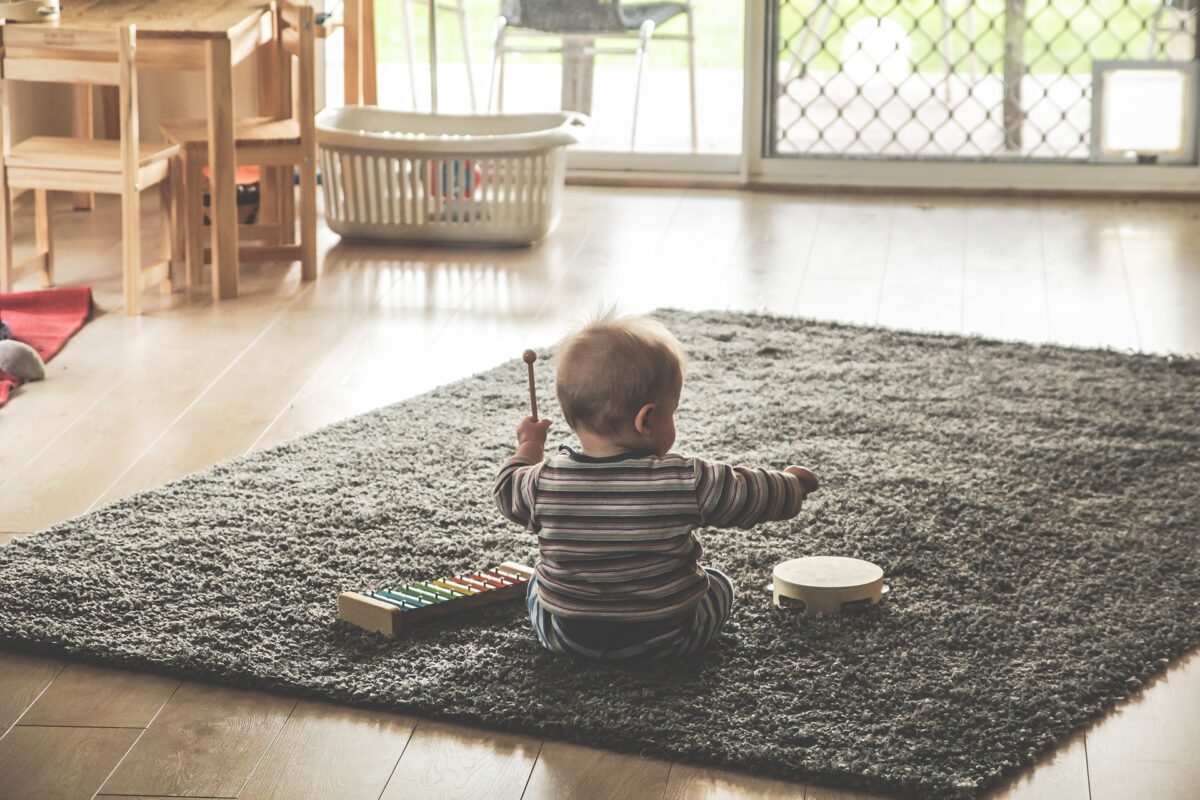The Absorbent Mind
Have you ever muttered something under your breath only for your child to repeat it nonstop for the rest of the day? Or noticed that your child has picked up on your mannerisms, like pacing while talking on the phone or fixing your hair in a certain way? If you’re a parent or caregiver, you’re probably nodding your head right now. The absorbent mind of a young child is like a sponge.
Maria Montessori had a term for the amazing, sponge-like quality of young children’s brains: the absorbent mind. Her lectures about the absorbent mind were so influential and extensive, in fact, that her followers compiled them into a book. The idea of the absorbent mind can help parents and caregivers understand child development and prepare the environment accordingly.
We know busy caregivers may not have time to read all 320 pages of Dr. Montessori’s book, “The Absorbent Mind.” Here, we’ve gathered bite-size teachings on the topic (and explain why they matter).

What Is the Absorbent Mind?
The term “absorbent mind” refers to the ability of young children to effortlessly absorb whatever is in their environment, including language, culture, habits, customs, and religion. Simply by existing, Dr. Montessori observed, young children absorb the knowledge that adults have to diligently acquire with their intelligence.
Language development is a perfect example of this phenomenon. Consider that children as young as 2 years old can speak their parents’ language, despite the fact that no one has taught them how to do so. They simply absorb it from their environment. Dr. Montessori noted that children follow faithfully “a severe syllabus which has been imposed by nature and with such exactitude that even the most pains-taking school would suffer in comparison.”
Dr. Montessori believed that all children are born with an absorbent mind. In the first school she founded, Dr. Montessori taught disadvantaged children with illiterate parents. Even so, the children learned to read and write by 4, despite no one teaching them to do so.
 “This seemed at the time a miracle,” Dr. Montessori said. “That children so small could write was in itself wonderful, but that they should do so without having received any teaching seemed impossible.”
“This seemed at the time a miracle,” Dr. Montessori said. “That children so small could write was in itself wonderful, but that they should do so without having received any teaching seemed impossible.”
While she (along with the press and public) first believed these children were special, Dr. Montessori eventually realized that all children have the capacity to absorb knowledge. This observation became the basis of her educational method. As she exposed children to additional subjects like botany, zoology, mathematics, and geography, she observed that children took to these subjects “with the same ease, spontaneously, without any fatigue.”
Planes and Periods of Development
While discussing the absorbent mind, it’s helpful to also understand both the planes and periods of development that Dr. Montessori observed.
- The Association Montessori International nicely sums up the four planes of development. The absorbent mind applies to children in the first plane of development, from birth to age 6. These years of early learning are critical to their education and development.
- Dr. Montessori further divided the idea of the absorbent mind into two periods: unconscious from ages 0-3 and conscious from ages 3-6. Dr. Montessori noted a shift at age 3, “as if life began again.” During the first 3 years of life, children develop language, movement, and other essentials. The subsequent 3 years are marked by the mastery of this development, unity of personality, and conscious memory. Even after this shift, however, Dr. Montessori observed that the power to absorb knowledge without fatigue continued.
Implications of the Absorbent Mind
Dr. Montessori’s observations on the absorbent mind aren’t just interesting to read about — they fundamentally change how we view, interact with, and educate children.
The Prepared Environment
Once we understand the power of the absorbent mind, it’s only logical to turn our focus to the prepared environment. “The absorbent mind of the child orients itself in the environment;” Dr. Montessori said, “so it is necessary to prepare the environment with much care.”
 This is why Montessori parents and educators take so much care to make the environment calm, beautiful, and inviting with developmentally appropriate activities at the ready. But a child’s environment is much more than just the school they attend or beautiful shelves in their playroom — it’s the entire world.
This is why Montessori parents and educators take so much care to make the environment calm, beautiful, and inviting with developmentally appropriate activities at the ready. But a child’s environment is much more than just the school they attend or beautiful shelves in their playroom — it’s the entire world.
Dr. Montessori taught that, if we want children to speak a language, we place them around people who speak that language. If we want them to absorb a culture, we regularly involve them in living that culture. She said: “The environment for the baby-child must be the world, the world that is around him, all of it!”
Educational Approach
The knowledge of the absorbent mind should also influence how we educate children. If we believe children are empty vessels waiting to learn from adults, then the top-down educational approach makes sense. But if we adopt Dr. Montessori’s perspectives, it becomes clear that education is more effective when adults give children a prepared environment and let their absorbent minds effortlessly do the work.
“We found that education is not what the teacher gives: education is a natural process spontaneously carried out by the human individual,” Dr. Montessori said. “It is acquired not by listening to words, but by experiences upon the environment. The task of the teacher then becomes not one of talking, but one of preparing a series of motives of cultural activity spread in a specially prepared environment.”
Conclusion
Dr. Montessori revolutionized the way adults see children. The absorbent mind is just one example of her groundbreaking observations that, when applied, radically influence mindful approaches to education and parenting.
How have you seen the absorbent mind at work in your children’s lives? Let us know in the comments below!




0 Comments